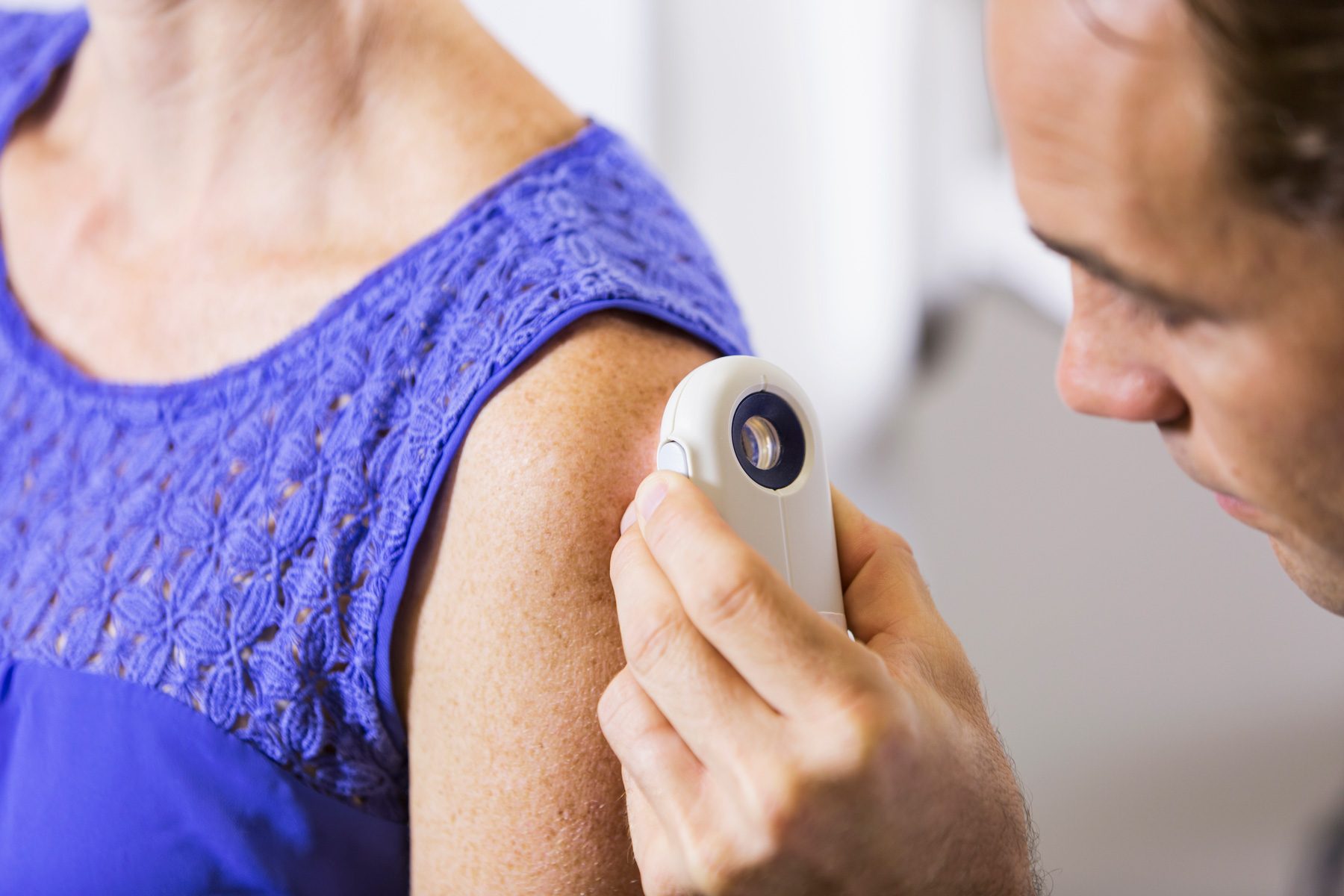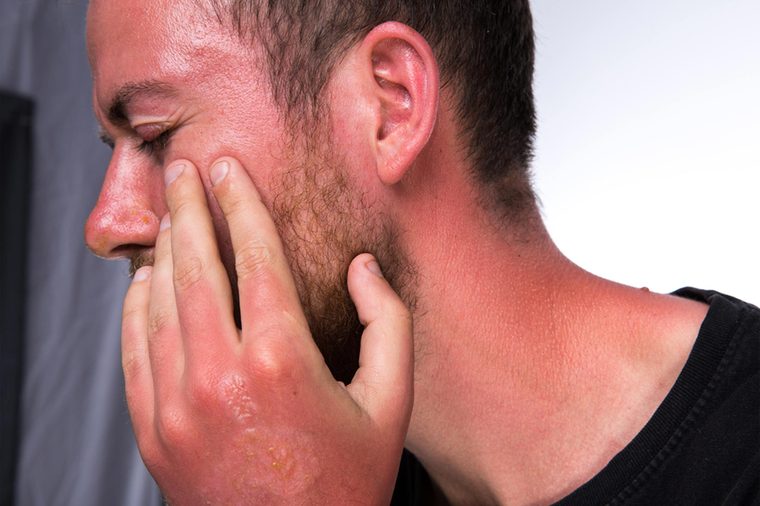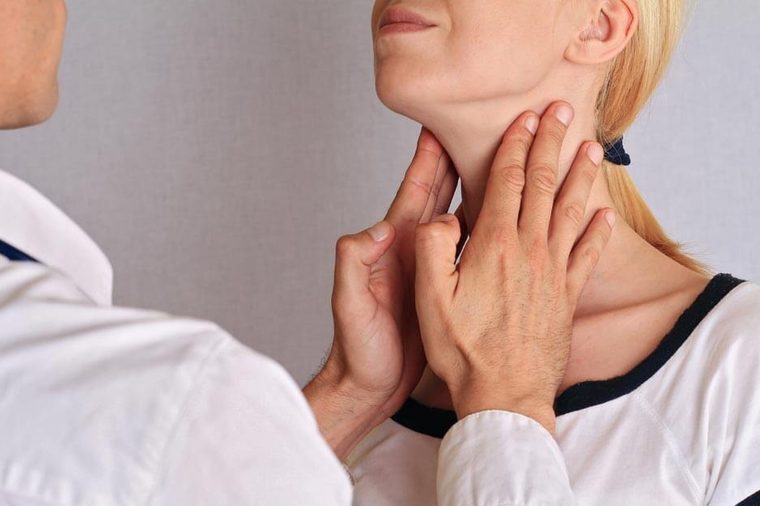Seeing a skin doctor isn’t just about checking for moles or getting a cream for acne or wrinkles. Dermatologists may see early signs of everything from celiac disease to diabetes.

11 Surprising Diseases that Dermatologists Find First


What your skin says about your health
“Our skin is a window into the body and can be an important indicator of your overall health,” says Adam Friedman, MD, FAAD, professor and Chair of Dermatology at George Washington School of Medicine and Health Sciences. He explains that your skin isn’t just a protective layer for your body’s systems but an important player in physiological processes. “Not only is the skin the largest organ—one that wears many hats from immune to endocrine function—it often reflects internal conditions and imbalances.”
That’s why dermatologists can tell a lot about your lifestyle and general health at first glance. Premature wrinkles and reduced skin elasticity are tell-tale signs of excessive sun exposure, smoking, and excessive alcohol use, for instance. And your skin can even reveal clues into your diet. “Foods high on the glycemic index [such as processed, sugary foods] will exacerbate primary skin diseases from acne to psoriasis,” Dr. Friedman says. “But even taking a step back, our skin, hair, and nails require a great deal of support and energy to constantly turn over—and therefore, a poor diet can impact all three.”
That’s why more severe internal changes, like a developing chronic or systemic disease, often trigger early signs and symptoms on our skin. Dermatologists keep an eye out for these warning signs, spotting potential issues that can help ensure patients get treated by a specialist in the earlier stages of an illness.

Type 2 diabetes
Obesity and insulin resistance—two hallmark characteristics of diabetes—can present as a velvety rash on the neck called acanthosis nigricans, says Emily Wood, MD, FAAD, a board-certified dermatologist at Westlake Dermatology in Austin, Texas.
Usually, patients with these dark patches don’t know they have diabetes, says Wilma Bergfeld, MD, FACP, the Emeritus Director and senior staff dermatologist in the department of dermatology at the Cleveland Clinic. “In dermatology, they tend to be younger, so we pick up these cases early.”
But as the disease progresses, more evidence tends to show up on the skin. Dr. Friedman says that people with uncontrolled and/or long-standing diabetes may develop tightness and thickening of the skin around finger joints, thickened waxy skin over the hands and feet, “orange-peel-like skin” on the upper back and neck, or sudden crops of firm yellow bumps on the skin around joints.
Another sign of diabetes—particularly in older men—is diabetic dermopathy, or red-brown “shin spots,” Dr. Friedman says. In addition, “Increased amount of skin tags can sometimes also be linked with insulin resistance and diabetes,” Dr. Wood adds.

Celiac disease
“Many autoimmune diseases can often first present as a skin rash,” Dr. Wood says. One example is dermatitis herpetiformis, a clear sign of celiac disease that occurs as itchy clusters of blisters on the elbows, knees, buttocks, and sometimes the scalp, according to the National Institute of Diabetes and Digestive and Kidney Diseases.
The condition affects around 13% of people with celiac disease, and it can occur even if someone has no other symptoms (such as gastrointestinal issues.) But 2023 research published in the Scandinavian Journal of Gastroenterology says that once a patient begins treatment for celiac disease—a lifelong diet free of gluten, found in wheat, rye, and barley—their skin improves, too.

Rheumatoid arthritis
This autoimmune disorder causes swelling, stiffness, and pain in joints throughout the body—typically starting in the smaller joints, such as the fingers and toes. This inflammation can also trigger issues in other parts of the body, including a range of skin issues. Around 20 to 30% of people with rheumatoid arthritis develop subcutaneous (under the skin) nodules, typically near affected joints, according to 2023 research published in the Journal of Personalized Medicine.
“Thinning of the skin, a translucency of the skin on the back of the hands, or brittle nails may also be common signs of rheumatoid arthritis,” says Roshini Raj, MD, a double-board-certified gastroenterologist, clinical associate professor at the NYU School of Medicine, and co-founder of TULA skincare.

Lupus
Lupus is an autoimmune disease that causes your immune system to attack the body’s tissues and organs—and in some cases, the condition only affects the skin. According to the Cleveland Clinic, about 10% of all lupus cases are cutaneous (skin-related), and 65% of people with systemic lupus will develop skin lupus.
Still, most people with lupus have skin problems, with skin swelling often presenting as the first sign of the disease, according to the American Academy of Dermatology (AAD). In particular, about half of lupus patients develop a distinctive butterfly-shaped rash (called a malar rash) that extends over the nose and cheeks.

Hypothyroidism
Hypothyroidism occurs when your thyroid gland doesn’t produce enough hormones to meet your body’s needs. The autoimmune disorder Hashimoto’s disease (thought to be primarily caused by genetics) is the most common cause of hypothyroidism. But it can also result from certain medications, an iodine deficiency, or other issues affecting the thyroid, according to the Cleveland Clinic.
Typically, hypothyroidism slows down your metabolism, leading to sudden weight gain and fatigue. But according to 2023 research from Frontiers in Endocrinology, skin issues are among the first notable signs of thyroid problems.
Dr. Friedman explains that a dermatologist might suspect hypothyroidism due to cool, pale skin; abnormally dry, scaly skin (xerosis); diminished sweating (hypohidrosis); yellowish skin; swelling in the lips, nose, and tongue; easy bruising and impaired wound healing (especially in women). Unexplained dry, brittle, coarse hair is another dermatological sign of hypothyroidism.

Hyperthyroidism
An overactive thyroid produces too much of thyroid hormones, which can cause a rapid heartbeat, excessive sweating, unexpected weight loss, and anxiety. A different autoimmune disorder called Graves’ disease is the most common cause—behind about 85% of cases of hyperthyroidism, according to the Cleveland Clinic—but thyroid damage or excess iodine consumption can trigger it as well.
Dr. Friedman says that a dermatologist can pick up on hyperthyroidism through signs like warm and moist skin, excessive hair growth (anywhere on the body), red palms (palmar erythema), or loss of eyebrows or eyelashes (madarosis). In more advanced cases, thyroid dermopathy may occur. This is a well-known sign of Graves’ disease, per the Frontiers in Endocrinology research, which appears as symmetric, yellow-brown to red waxy bumps and plaques (thick, raised, scaly skin) on the lower limbs, says Dr. Friedman.

Inflammatory bowel disease (Crohn’s and colitis)
While Chrohn’s and colitis primarily affect the gastrointestinal tract, about 47% of people experience other symptoms, with the most frequent being skin problems, according to 2023 research published in Frontiers in Immunology. Among these reported IBD-related skin issues, the most common are pyoderma gangrenosum (ulcer-like lesions that tend to occur on the shins, ankles, and arms) and erythema nodosum (painful red or blue patches of lumps). Many IBD-related skin conditions ebb and flow with disease flare-ups; when your GI tract acts up, so will your skin.

Kidney disease
“There are many dermatological manifestations of kidney disease,” Dr. Friedman says. “Many patients develop chronic anemia, resulting in skin pallor (paleness).” When your kidneys aren’t filtering your blood as they normally should, toxins can build up, resulting in changes to the skin color, too—a yellowish hue in lighter-skinned people or a gray color in those with darker skin tones.
Extremely dry, itchy skin, rashes, hyperpigmentation, and blisters are all common skin symptoms of advanced kidney disease (also known as end-stage renal disease).

Addison’s disease
The adrenal glands—located just above the kidneys—are responsible for pumping out cortisol, a crucial hormone that helps the body respond to stress. Addison’s disease results when the adrenal glands don’t make enough cortisol, which can cause a diverse range of symptoms, including muscle weakness and fatigue, weight loss and decreased appetite, low blood pressure and blood sugar, and more.
Because symptoms of Addison’s disease can come on gradually and subtly, it’s often not diagnosed right away. One Addison’s symptom that’s a red flag for dermatologists is darkening of the skin—Dr. Bergfeld says it’s almost as if patients appear tan. Unexplained stretch marks on the skin are another sign.

Nutritional deficiency
“One thing many people don’t know is that one sign of vitamin D deficiency is actually hair loss,” Dr. Friedman says. Hair loss can also result from a very restrictive diet—such as avoiding carbs or meat—which can lead to deficiencies in protein, zinc, or iron, Dr. Berfeld adds.
Dr. Friedman says that dry, flaky skin can result from nutritional deficiencies as well. “[This is because] the materials needed to make the skin barrier are missing.”

PCOS
“Hormonal changes that affect the entire body can manifest as acne, such as in patients with polycystic ovarian syndrome (PCOS),” Dr. Wood says. It’s estimated that up to 82% of women with PCOS experience skin problems, including acne, hirsutism (excessive male-pattern hair growth), and hair loss around the scalp, according to 2020 research published in the Open Journal of Obstetrics and Gynecology.
About the Experts
|
For more wellness updates, subscribe to The Healthy @Reader’s Digest newsletter and follow The Healthy on Facebook and Instagram. Keep reading:




















